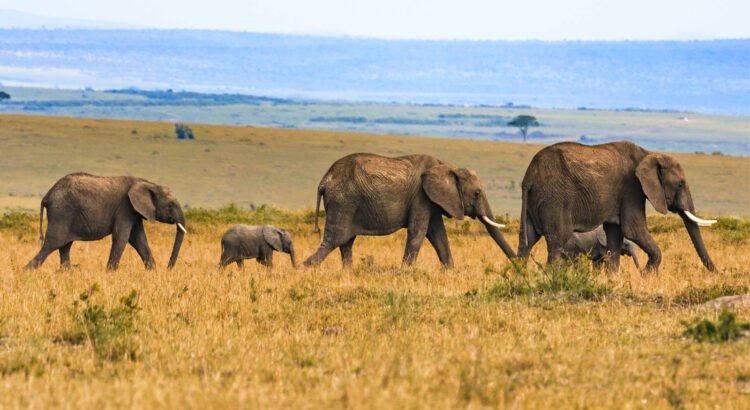
When it comes to experiencing the untamed beauty of Africa, few regions offer the breathtaking diversity and richness of East Africa. Here, nature’s grandeur meets cultural depth in a way that is both immersive and unforgettable. From the wide savannahs of the Serengeti to the geological wonders of the Great Rift Valley, and the historical spice-scented breeze of the Swahili Coast, East Africa is a region where every moment feels like a cinematic masterpiece unfolding in real life.
This is a land where lions roam freely, flamingos paint lakes pink, ancient coral mosques whisper of medieval trade empires, and turquoise waters hug white sandy shores. For travelers seeking a combination of wildlife adventures, geological marvels, and coastal cultural richness, few places in the world match what East Africa has to offer. Embark on a journey through Safari Adventures, the Great Rift Valley, and the Swahili Coast — three extraordinary realms that together create the heartbeat of East African exploration.
Safari Adventures: Where the Wild Things Roam
The word “safari” comes from the Swahili language, meaning “journey,” and no journey in East Africa is complete without immersing yourself in the wilderness through a game drive across the open plains. Countries like Kenya and Tanzania are home to some of the world’s most famous national parks and game reserves, where the cycle of life unfolds in its rawest, most authentic form.
One of the most iconic safari destinations in the world is the Masai Mara National Reserve in Kenya, which seamlessly extends into Tanzania’s Serengeti National Park. Together, they form the stage for the Great Migration — one of the last remaining natural spectacles on Earth. Over 1.5 million wildebeest, along with zebras, gazelles, and their predators, cross crocodile-infested rivers and endless grasslands in a dramatic cycle of survival. Witnessing this event is nothing short of spiritual, as thousands of hooves thunder across the horizon, chased by lions, leopards, and cheetahs.
In Tanzania, Ngorongoro Crater, a UNESCO World Heritage Site, offers a unique safari experience within a massive volcanic caldera. This natural amphitheater teems with wildlife, including endangered black rhinos, elephants with immense tusks, and dense populations of hyenas and lions. The scenery is otherworldly — misty ridges encircle the crater floor, where soda lakes shimmer and acacia trees dot the landscape.
Beyond the famous reserves, there are hidden gems like Lake Nakuru National Park, renowned for its flocks of pink flamingos and tree-climbing lions; Amboseli National Park, where herds of elephants roam beneath the gaze of Mount Kilimanjaro; and Tsavo, Kenya’s largest park, known for its “red elephants” that dust themselves in the park’s iron-rich soil.
Safari adventures are not just about seeing animals — they are about coexisting with nature. You’ll learn from Maasai and Samburu guides whose ancestral knowledge enhances every encounter. You’ll experience the stillness of a sunrise over the savannah, the tension of a lioness on the hunt, and the peace of stargazing by the campfire at night, the distant roar of a lion echoing through the dark.
Whether in a 4×4 vehicle, on foot during a walking safari, or soaring above the plains in a hot air balloon, the safari is a deeply personal, life-affirming experience that reconnects you to the primal rhythm of the Earth.
The Great Rift Valley: Nature’s Grand Fracture
Stretching over 6,000 kilometers from Lebanon to Mozambique, the Great Rift Valley is one of the most dramatic geographical features on the planet. In East Africa, particularly in Kenya and northern Tanzania, the Rift Valley carves through the landscape with a mix of escarpments, volcanic mountains, freshwater and alkaline lakes, hot springs, and deep gorges. It is a region of raw beauty and geological intrigue.
The Great Rift Valley is not just a visual wonder — it is also the cradle of humankind. Archaeological sites like Olduvai Gorge in Tanzania have yielded some of the oldest human fossils and tools, giving scientists vital clues about early human evolution. Walking through this ancient gorge is like stepping back millions of years in time, where footprints preserved in volcanic ash tell the story of our ancestors.
In Kenya, towns like Naivasha, Nakuru, and Baringo are nestled within the valley’s dramatic contours, offering lakefront tranquility and abundant birdlife. Lake Naivasha, a freshwater lake surrounded by papyrus swamps and hippo pods, is a popular spot for boat rides and birdwatching. Lake Nakuru, known for its shimmering soda waters and flamingos, is also a sanctuary for endangered black and white rhinos.
Perhaps the most surreal of all is Lake Magadi, a pink-hued soda lake with crystalline shores and a salt-encrusted landscape that looks like another planet. Here, flamingos feed on microscopic algae, and the air smells of minerals and earth — a vivid reminder of the valley’s volcanic origins.
The Great Rift Valley is also home to several impressive volcanoes, including Mount Longonot, which can be climbed in a day, and Mount Suswa, which features dramatic lava tubes and caves. These peaks offer challenging hikes and panoramic views of the surrounding valley, where rolling green hills meet ancient escarpments and sunlit lakes.
But the valley’s beauty is not only geological — it’s cultural. Indigenous communities such as the Maasai, Kalenjin, and Turkana have lived in harmony with this land for centuries. Their presence, traditions, and storytelling enrich the Rift Valley with human spirit, adding another layer to its grandeur.
The Swahili Coast: Where Africa Meets the Ocean
After exploring the wild interior and soaring mountains of East Africa, nothing is more refreshing than descending to the Swahili Coast, where the turquoise waters of the Indian Ocean lap gently against sun-drenched shores. Stretching from southern Somalia through Kenya and Tanzania to northern Mozambique, the Swahili Coast is a region of stunning beauty and deep historical significance.
The coast’s charm lies in its unique blend of African, Arab, Persian, and Indian influences that have shaped its culture over centuries. From the 9th century onward, Swahili city-states like Lamu, Zanzibar, Kilwa, and Mombasa thrived as bustling hubs of maritime trade. Merchants exchanged spices, gold, ivory, and textiles, creating a multicultural melting pot where language, religion, and cuisine blended seamlessly.
Zanzibar, also known as the “Spice Island,” is a crown jewel of the Swahili Coast. Its capital, Stone Town, is a UNESCO World Heritage Site filled with winding alleys, intricately carved wooden doors, sultan’s palaces, and bustling bazaars. Here, history lives in every corner — from Omani forts to ancient mosques and colonial-era architecture.
The Swahili culture is perhaps best expressed in its language — Kiswahili — a lyrical blend of Bantu roots and Arabic, spoken widely across East Africa. In coastal towns, you’ll hear it in every greeting, every song, and every call to prayer drifting from minarets at dusk.
The beaches themselves are picture-perfect: white sands, palm trees, warm seas, and vibrant coral reefs. In Diani Beach (Kenya) or Nungwi and Paje (Zanzibar), travelers can swim, kite surf, snorkel, or simply lounge under a thatched umbrella sipping fresh coconut juice. For divers, marine parks like Mnemba Atoll offer encounters with dolphins, whale sharks, and kaleidoscopic fish.
Seafood is a staple here — grilled lobster, octopus curry, spiced prawns, and coconut rice dominate local menus. The flavors of cloves, cinnamon, and cardamom waft through coastal kitchens, carrying the legacy of the region’s spice trade.
Evenings on the Swahili Coast are magical. Dhows (traditional wooden sailing boats) glide silently over the horizon at sunset, silhouetted against a tangerine sky. The sound of taarab music, a Swahili genre blending Arabic, Indian, and African melodies, drifts through the air as the stars begin to shimmer.
Three Worlds, One Journey
What unites these three distinct yet interconnected regions — safari plains, rift valley highlands, and coastal settlements — is the spirit of East Africa. Each offers a different glimpse into the region’s soul: the thrill of untamed nature, the awe of Earth’s ancient story, and the warmth of centuries-old cultural exchange.
Together, they form a travel experience like no other. A single journey can take you from watching a lioness nurse her cubs beneath a thorn tree, to hiking the rim of a volcanic crater where humanity began, to savoring grilled calamari on a beach where sultans once ruled. Few destinations offer such profound variety — of ecosystem, history, and human expression — within such proximity.
East Africa invites travelers not just to see, but to feel. To feel the rumble of hooves on the savannah. To feel the wind atop a valley ridge. To feel the breeze scented with cloves and sea salt. It’s not just a vacation — it’s a reconnection with what it means to be alive on this diverse and dazzling planet.




